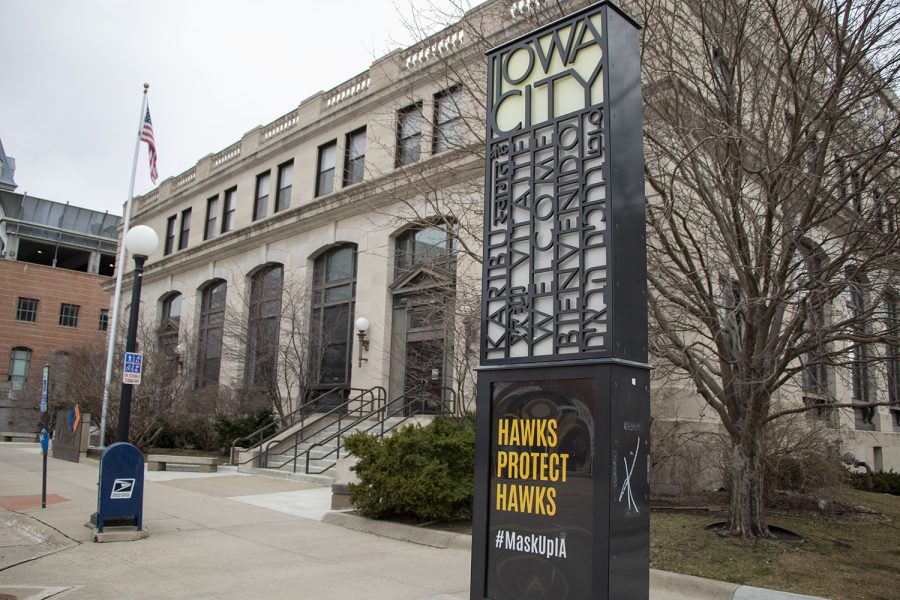The age of darkroom photography has made a comeback in the Iowa City Senior Center, lining the walls of the third-floor hallway with the classic hues of black and white.
All of this stems from the mind of Aussie creator Bruce Hart, a passionate photographer from the beginning.
“I loved photography and really liked to have a camera,” Hart said. “If you stay in the continent all your life, it’s boring. But at the same time, Australia is fascinating.”
His collections have been put up for viewing from 8 a.m. to 5 p.m. from Aug. 8 to the ending reception on Sept. 29.
Hart, when asked why he chose the senior center as the host for his work, said he was asked to put on a show and could easily put one together.
He and his wife, Cheryl Walsh, went through their old photographs, looking back at some of the framed pieces.
“We saw two themes kind of coming together; the people and places,” she said.
There were two collections of photos on the leftmost wall, both addressed to a man and a woman, Su Cruickshank and Bernie McGann.
In Australia, Hart wanted to take pictures of Cruickshank, a popular cabaret singer and comedian, who he learned about while working as a photographer for theater productions. Hart wondered what her life was like offstage. While he did not realize it at first, he was actually photographing Cruickshank during the height of her loneliness.
Meanwhile, McGann was just starting out as a musician when Hart met him. He had no idea that by the 1990s, McGann would become one of the most well-known jazz musicians in Australia.
Photographing McGann was a ten-year project, and Hart captured images of him onstage, backstage, and in rehearsal. It was during this time that Hart realized that he found something in common with McGann: The fact that both of them still did what they loved even though it barely paid the bills.
Besides Cruickshank’s and McGann’s stories, Hart photographed different landscapes, like the Australian outback and famous monuments.
“He does the sort of social documentary photography that [his mentor] taught him, and he also has a love of landscape photography,” Walsh said.
His mentor was Jürgen Schadeberg. According to the New York Times, Schadeberg was a photojournalist that depicted the “increasingly violent imposition of apartheid on Black lives” and had shots of Nelson Mandela in action. Hart was introduced to Schadeberg in London in the 1970s when he took one of Schadeberg’s classes.
“I thought to myself, ‘Okay, well, I’m gonna get in there and have a go at it,’” said Hart, who hadn’t realized at the time that it would be one of the first steps toward a professional photo career. Hart was then featured in “The Quality of Life,” which was a photography collective exhibited in the New National Theatre in London in 1976.
“That was his first exhibition, really,” Walsh said. “It was with I think five or six other photographers, and it filled all the lobbies of the New National Theatre. It was a really big thing in London at the time.”
“I could never have done it without Jürgen,” said Hart.
The pieces in the hallway of the gallery were works of analog photography: “These are all silver gelatin prints done in the darkroom,” Walsh said. “All of them involve lots of manipulation of the chemicals and the timing.”
Hart owned various types of cameras, such as the Olympus OM-1, a range finder Leica, and a Rollei (roll-eye). For this particular photo exhibition, Walsh said that he mainly used the Olympus OM-1 with Tri-X film.
Hart wants to leave everything about the work up to interpretation of the audience, according to Walsh,
“It’s not really a message that you’re (Hart) trying to get across, it’s the image,” Walsh said. “You’re trying to create a feeling. You’re trying to create the invisible.”
Hart wanted to offer a piece of advice to budding photographers: “Look at what you’re doing, and when you think it’s the right time, click. That’s the finest moment.”



